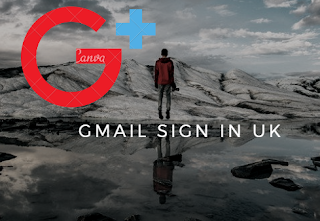log in or signup
While Hellion describes those terms in general, I am writing here in the context of the cyberworld that also includes the gadgets. You mentioned log-in and that's what makes me think that you probably want to know the difference in the context of Internet.
Well, sign up simply means to register. It could be portal, newsletter or things the like. So when you visit and access anything for the first time, you need to sign up. Often, this is referred to as register. For instance, if you are new to Twitter, you need to sign up first.
What is interesting is sign in and log in. Well, both mean same that you enter somewhere where you are already registered. The web portals use both the terms. Facebook, ELL and COCA calls it Log in, whereas Google, Twitter, Bank of America and LinkedIn uses Sign in.
Note that all these portals uses sign up for the process of first time registration and not log up.
A subtle difference
I'm acquainted with webmastership as well and it's interesting to know that during our audit, we check the log. The 'Log' includes the number of sessions per user. The session is a complete cycle of the user logging in and then after the work is done, logging out..
This means that if you are signing in for one session, the correct word is log in. So, for the user, it could be sign in but for the system, it's log in.
It is for this reason, content management software/portal like WordPress uses log in because it maintains the log each time you sign in and sign out which will complete the cycle of one session. It is for this reason again, the computer asks to log in and not sign in. After all, you enter and come out completing one cycle i.e. session.
What I prefer is asking the user to log in if you are strictly maintaining the record (--say WordPress or Bank portal) and in other case where maintaining log is not so important (say a subscription for the newsletter, jokes, pranks or the like) sign in.
While using these words, it's important that you stick to one style. If you ask the user to log in, give them an option of log out and not sign out and vice versa.
Not exactly the answer but important to mention.
Log on or Log in - You log on to the URL/Website and it'll take you on the webpage as a guest or non-registered member. You log in and the site is personalized for you. For instance, log on to Amazon.com and you see all the products listed. You are just a visitor. Log in to Amazon.com and you see all the products listed along with your personalized Amazon that may have the history of your purchase, favorite items and other services that Amazon provides to its registered user.
Well, sign up simply means to register. It could be portal, newsletter or things the like. So when you visit and access anything for the first time, you need to sign up. Often, this is referred to as register. For instance, if you are new to Twitter, you need to sign up first.
What is interesting is sign in and log in. Well, both mean same that you enter somewhere where you are already registered. The web portals use both the terms. Facebook, ELL and COCA calls it Log in, whereas Google, Twitter, Bank of America and LinkedIn uses Sign in.
Note that all these portals uses sign up for the process of first time registration and not log up.
A subtle difference
I'm acquainted with webmastership as well and it's interesting to know that during our audit, we check the log. The 'Log' includes the number of sessions per user. The session is a complete cycle of the user logging in and then after the work is done, logging out..
This means that if you are signing in for one session, the correct word is log in. So, for the user, it could be sign in but for the system, it's log in.
It is for this reason, content management software/portal like WordPress uses log in because it maintains the log each time you sign in and sign out which will complete the cycle of one session. It is for this reason again, the computer asks to log in and not sign in. After all, you enter and come out completing one cycle i.e. session.
What I prefer is asking the user to log in if you are strictly maintaining the record (--say WordPress or Bank portal) and in other case where maintaining log is not so important (say a subscription for the newsletter, jokes, pranks or the like) sign in.
While using these words, it's important that you stick to one style. If you ask the user to log in, give them an option of log out and not sign out and vice versa.
Not exactly the answer but important to mention.
Log on or Log in - You log on to the URL/Website and it'll take you on the webpage as a guest or non-registered member. You log in and the site is personalized for you. For instance, log on to Amazon.com and you see all the products listed. You are just a visitor. Log in to Amazon.com and you see all the products listed along with your personalized Amazon that may have the history of your purchase, favorite items and other services that Amazon provides to its registered user.

0 comments:
Post a Comment
Facebook has greatly reduced the distribution of our stories in our readers' newsfeeds and is instead promoting mainstream media sources. When you share to your friends, however, you greatly help distribute our content. Please take a moment and consider sharing this article with your friends and family. Thank you.